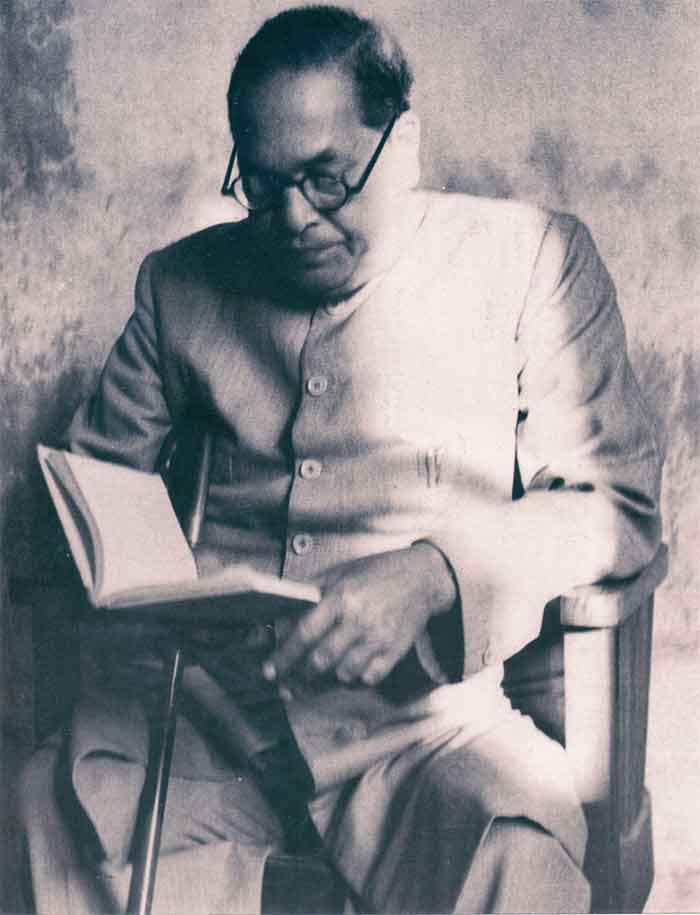
Dr. Bhimrao Ramji Ambedkar has been considered as one of the most towering multifaceted personalities not only in Indian political and intellectual history, rather he was more than a masterful public intellectual, and an astute political communicator and media strategist. To become a voice of the voiceless people, he used ability of political communication and media to amplify the grievances of the oppressed classes, especially the marginalised. He made him as an enduring symbol of resistance against the human rights violations and emancipator of the voiceless people. He was an astute linguistic knowing more than 10 languages and very effectively he used to them as political communication tools not merely about rhetoric or public speaking; rather used it a multidimensional strategy such as publishing, print media, mass mobilization, symbolic actions, and legislative advocacy. Through these media tools, he transformed the voice of the voiceless into a powerful force for social transformation and mobilization.
Print Media: Voice of Voiceless
The printed media was one of the most powerful tools, that Dr. Ambedkar had used to connect with the marginalized and voiceless people. Mainstream media of the time used to pursue the biases and prejudices, and frequently ignored or distorted the concerns of the Dalits and lower castes. Being aware of these concerns, Dr. Ambedkar launched his own newspapers. In 1920, he started the weekly Mooknayak (Leader of the Dumb) to provide a voice to those who were systematically silenced.
In the subsequent years, Dr. Ambedkar started other papers such Bahishkrit Bharat (Excluded India) and Janata. Through these papers, he used to raise the issues and challenges of the poor people. He used to educate and empower the Dalits as well as to challenge the caste system prevailing at that point of time. He criticized the social system and provided hope by means of editorials, and analytical commentaries. These papers are widely distributed among the marginalized communities and these writings not just had literary values but also mobilizing effects on the people. This is how, he spread the message of dignity, rights, and self-respect through these papers to the remote areas of the country.
Dr. Ambekar was a great eloquent orator. His speeches have been remained some of the most iconic pieces of political communication in Indian political and media history. He had the skill to address both elite political audiences and grassroot level gatherings with equal command. His rhetorical style used to remain rooted in logic, evidence, and moral clarity, which he distinguished him from many of his contemporaries. His historic speech at the Round Table Conferences in London has been remained as monumental for the voiceless people. In this speech, he fiercely advocated for the rights of the depressed classes. Also, he had strongly kept the rights of the ‘Depressed Classes’ before the British government. He passionately debated in the Constituent Assembly as well for the same and his arguments resonated deeply with the oppressed. For example, it can be argued that during the Round Table Conferences, his advocacy for separate electorates for Dalits was not put forward as a demand for favor, rather as a rightful claim based on historical injustice meted out socio-politically to the marginalized people. These symbolic acts, often covered in Ambedkarite media, challenged both physical and epistemic violence. They forced the upper castes and the mainstream media to reckon with the urgency of caste reforms. For the marginalized, these acts instilled a sense of courage and collective identity.
Dr. Ambedkar’s belief in the power of education has not just remained as an abstract idea. He put forward the strong argument in favor of the education as the first step toward liberation and social mobility. Even he used his own academic credentials—MA, PhD, DSc, and Bar-at-Law as a tool to challenge the coexisting stereotypes about the marginalized capabilities. His books such as Annihilation of Caste, The Problem of the Rupee, and Who Were the Shudras? were not merely considered as academic works; rather these works turned as tools of political education as well for the moral teaching to be pursued by the people. Initially, Annihilation of Caste, was written as a speech for Jat-Pat Todak Mandal, that stands out as a bold manifesto against the existing socio-political evils such as caste and untouchability.
Role of Dr. Ambedkar as a chairperson in the Constituent Assembly, has been marked by the zenith of his use of formal political communication. he used this platform not just to construct legal frameworks but also made provisions in the constitution to embed the liberatory values—liberty, equality, and fraternity—into the soul of the Indian Republic. His speeches and actions in the Constituent Assembly had gone beyond legal jargon. These actions and speeches were worked as moral appeals for a just society. This is how, he addressed the structural and psychological roots of inequality and warned against the dangers of political democracy without social and economic democracy. Through his speeches, actions, and philosophical ideas; he had left very indelible impacts in terms of social, economic and political rights of the depressed people.
Conclusion
Dr. B. R. Ambedkar’s political communication was rooted in his ethical commitment to social justice. He used the media, both traditional and symbolic as an instrument for consciousness-raising and empowerment of the voiceless people. His life works as an example to illustrate how effective communication, when coupled with moral clarity and structural analysis, can awaken the voiceless and challenge the status quo. Dr. Ambedkar didn’t just become a voice for the voiceless, rather he taught the voiceless people how to speak for themselves.
At last, it can be argued that Dr. Ambedkar’s methods of political communication have had a lasting legacy for the social mobilization. The Ambedkarite movement continues to draw strength from the speeches, symbols, texts, and media strategies, that Dr Ambedkar used. In the current scenario, the Dalit literature, poetry, films, and social media activism often draw inspirations from Dr Ambedkar and used to cite his works, speeches, and actions as foundational. He displayed communication not just as a tool for politics but it must be an essence of social, economic and political democratic engagements.
In the current age, reinterpretations of his ideas in podcasts and documentaries testify to the enduring power of his media and communication strategies. Dr Ambedkar would remain a rallying point for justice movements across caste, class, and even global borders.
